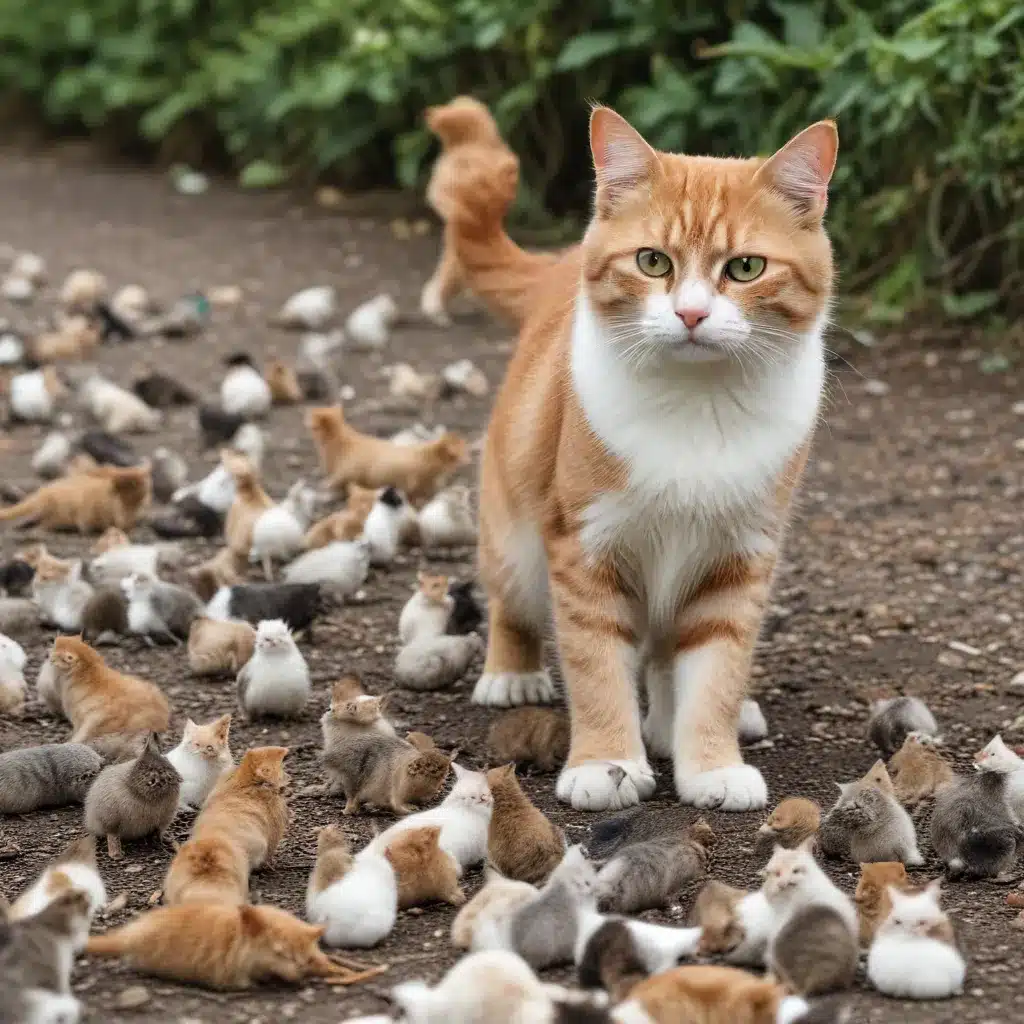
Bird Populations and Threats
As an experienced avian caretaker and expert in the field, I can confidently say that cats are not the primary driver behind declining bird populations in the United States. While domestic cats do contribute to some bird mortality, the magnitude of this impact has often been exaggerated and misrepresented. In reality, a variety of complex, interrelated factors pose much greater threats to our native avian species.
Native Bird Species
The United States is home to a diverse array of native bird species, many of which face an array of conservation challenges. Habitat destruction, climate change, collisions with human-made structures, pesticide poisoning, and other human-caused disturbances all take a significant toll on bird populations nationwide. Studies show that these factors account for the vast majority of direct anthropogenic bird mortality, far outweighing the impact of domestic cat predation.
Invasive Species
The introduction of non-native, invasive bird species has also played a role in population declines for some native species. Aggressive competitors like the house sparrow and European starling can outcompete native birds for resources and nesting sites. However, even in these cases, habitat loss and other human-driven changes are typically the primary drivers of native species decline.
Habitat Destruction
Perhaps the single greatest threat to bird populations is the ongoing loss and fragmentation of natural habitats. As urban development, agriculture, and other human land uses encroach on wild spaces, birds lose the food, shelter, and breeding grounds they require to thrive. This habitat loss and degradation is a far more significant factor in population declines than predation by domestic cats.
Predator-Prey Interactions
While predation is a natural ecological process, the introduction of non-native predators like domestic cats can disrupt delicate predator-prey dynamics. However, the scientific evidence suggests that the impact of cat predation on overall bird populations has been exaggerated.
Predatory Birds
Native predatory birds like hawks, owls, and falcons play an important role in regulating avian populations. These skilled hunters target weaker or less fit individuals, helping to maintain the overall health and resilience of bird communities. In contrast, domestic cats typically hunt indiscriminately, with a potentially greater impact on vulnerable species.
Domestic Cats as Predators
Numerous studies have attempted to quantify the extent of bird mortality caused by domestic cats, both owned and unowned. While these estimates vary widely, the most comprehensive, data-driven analyses suggest that cat predation, while not insignificant, is not the primary driver of bird population declines in the United States.
Impacts on Bird Populations
Importantly, the majority of birds killed by cats are common, non-native species, rather than threatened or endangered native birds. And for many native bird species, cat predation represents just a small fraction of the overall mortality they face from other threats. In some cases, cat predation may have localized impacts, but it is unlikely to cause widespread, regional-scale population declines.
Avian Conservation Efforts
Effective conservation of bird species requires a multifaceted approach that addresses the full suite of threats they face. While reducing domestic cat impacts can be part of this strategy, it should not be the sole or primary focus.
Protecting Habitats
Protecting and restoring natural habitats is critical for supporting healthy bird populations. This includes preserving forests, wetlands, grasslands, and other ecosystems that provide the food, shelter, and breeding sites birds need to thrive.
Reducing Human-Wildlife Conflicts
Strategies to mitigate other human-caused threats, such as collisions with buildings and vehicles, pesticide use, and disturbance of nesting sites, are also essential components of avian conservation efforts.
Community Engagement
Engaging the public, landowners, and other stakeholders is key to successful bird conservation. By educating communities about the complex challenges facing bird populations and empowering them to take action, we can work together to protect these vital members of our ecosystems.
Myths and Misconceptions
Unfortunately, the notion that domestic cats are the primary cause of bird population declines is a persistent myth that is not supported by the scientific evidence. It’s important to address these misconceptions and promote a more accurate understanding of the factors impacting avian communities.
Feline Predation and Bird Declines
While domestic cats do prey on birds, numerous studies have shown that this predation is not the driving force behind widespread bird population declines. As outlined in the Nature Communications article, the magnitude of bird mortality caused by cats, while substantial, is far lower than other major anthropogenic threats.
Scientific Evidence and Consensus
The scientific consensus, based on rigorous, data-driven analyses, is that habitat loss, collisions, pesticides, and other human-caused factors pose a much greater threat to bird populations than domestic cat predation. Responsible pet ownership and management of unowned cats can help, but these measures alone are not sufficient to address the full range of challenges facing our avian species.
Promoting Accurate Information
As an expert in avian care and conservation, I encourage everyone to seek out reliable, science-based information when it comes to understanding the threats facing bird populations. By debunking myths and providing factual, balanced perspectives, we can work together to develop effective strategies for protecting our feathered friends.
At Mika Birds Farm, we are committed to promoting the health and well-being of all bird species, both domestic and wild. Through our educational resources, rehabilitation efforts, and community outreach, we strive to empower people to make a positive difference for birds. Join us in this important mission to safeguard the future of our avian ecosystems.


